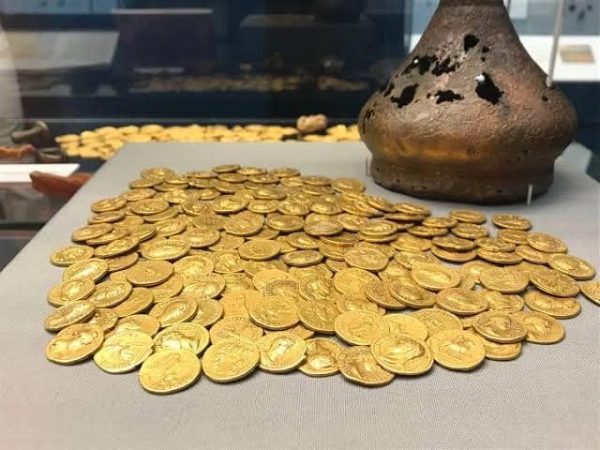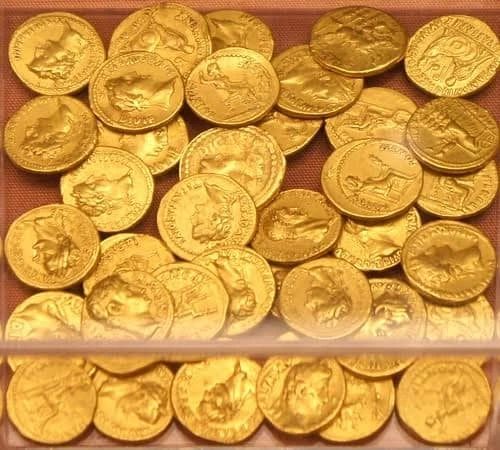In 1911 CE, beneath the floor of a Roman house in Corbridge, a hidden treasure was unearthed, revealing the secrets of ancient wealth preservation. This cache, consisting of 160 aureus coins, was not merely a chance discovery but a carefully concealed fortune waiting for centuries to be uncovered.

The coins, stored within a bronze jug, were shrouded in mystery and intrigue. To safeguard their true value, two bronze coins were strategically wedged in the jug’s neck, concealing the golden riches within.
The jug’s location beneath the house floor added an element of secrecy, suggesting a deliberate effort to protect the wealth from potential invaders, thieves, or even the prying eyes of fellow residents.
When the moment of discovery arrived and the jug was lifted from its subterranean hiding place, the weight of the gold proved too much for the aging container. The jug broke, and the gleam of 160 aureus coins was finally revealed.

This hoard, now known as the Corbridge Aureus Hoard, has since become a captivating artifact that offers a unique glimpse into the economic strategies and personal wealth management of the Roman era.
The decision to hide the aureus coins in such a manner, with the deliberate use of the jug and the strategic placement of two bronze coins, suggests a level of sophistication in wealth concealment.
Whether this cache was accumulated through trade, inheritance, or some other means, the individuals responsible for its concealment understood the importance of keeping their wealth discreet and secure.
The aureus, a gold coin of ancient Rome, was highly valued and often used for significant transactions and displays of wealth.

The Corbridge Aureus Hoard not only represents a substantial sum in monetary terms but also serves as a testament to the economic complexities and strategies employed by individuals in ancient Roman society.
The artifacts from this hoard, including the broken jug and the carefully concealed coins, have found a home in the British Museum, London, allowing modern-day observers to marvel at the ingenuity of those who lived in Corbridge around 160 CE.
The Corbridge Aureus Hoard stands as a tangible link to the past, inviting us to ponder the stories of wealth, secrecy, and discovery hidden beneath the floors of ancient Roman dwellings.





